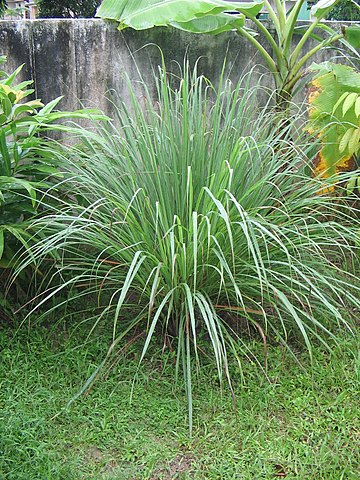Lemongrass (Cymbopogon citratus) is a versatile and aromatic herb commonly used in Asian and tropical cuisines. If you’re interested in growing lemongrass in your garden, here’s the ultimate guide to help you get started:
1. Choosing the Right Location:
- Lemongrass thrives in a warm and sunny environment. Select a spot in your garden that receives at least 6-8 hours of direct sunlight per day.

2. Preparing the Soil:
- Lemongrass prefers well-draining soil. You can amend heavy or clayey soil with organic matter like compost to improve drainage.
3. Planting Lemongrass:
- Lemongrass is typically propagated from divisions, as it doesn’t grow well from seeds. You can purchase lemongrass stalks with roots from a nursery or grocery store. Plant them in your garden once the danger of frost has passed. Space the plants about 2-3 feet apart to allow for their expansive growth.
4. Watering:
- Lemongrass enjoys consistently moist soil. Water your plants regularly, especially during dry periods, but avoid waterlogged conditions. It’s important not to let the soil dry out completely.
5. Mulching:
- Applying a layer of organic mulch around your lemongrass plants helps to retain moisture, control weeds, and maintain consistent soil temperature.
6. Maintenance:
- Lemongrass can grow vigorously, so it’s essential to keep it in check. Prune the plants regularly by removing old and dead leaves, as well as flower stalks when they appear. This will encourage fresh growth and prevent overcrowding.
7. Harvesting:
- You can start harvesting lemongrass once the stalks are about ½ to 1 inch thick and at least a foot tall. To harvest, cut the stalks at ground level. Use a sharp knife or scissors to trim the leaves, leaving the base intact to encourage regrowth.
8. Uses for Lemongrass:
- Lemongrass is a versatile herb that can be used in various ways:
- Culinary Use: Add fresh or dried lemongrass to soups, curries, stir-fries, marinades, and more for its unique citrusy flavor.
- Herbal Tea: Brew lemongrass leaves to make a refreshing and aromatic tea with a lemony zest.
- Aromatherapy: Crush or bruise lemongrass leaves to release their pleasant aroma, which can help deter insects when placed near outdoor seating areas.
- Homemade Products: Lemongrass oil extracted from the plant is used in a variety of homemade skincare and essential oil products.
9. Overwintering:
- In cooler climates, lemongrass can be overwintered by digging up the plants before the first frost and transplanting them into pots. Place them in a sunny indoor location for the winter.
Growing lemongrass in your garden can provide you with a steady supply of this versatile and aromatic herb. Whether you’re using it in your culinary creations, brewing herbal tea, or enjoying its pleasant aroma in your garden, lemongrass can add a unique and refreshing dimension to your outdoor space and kitchen.











